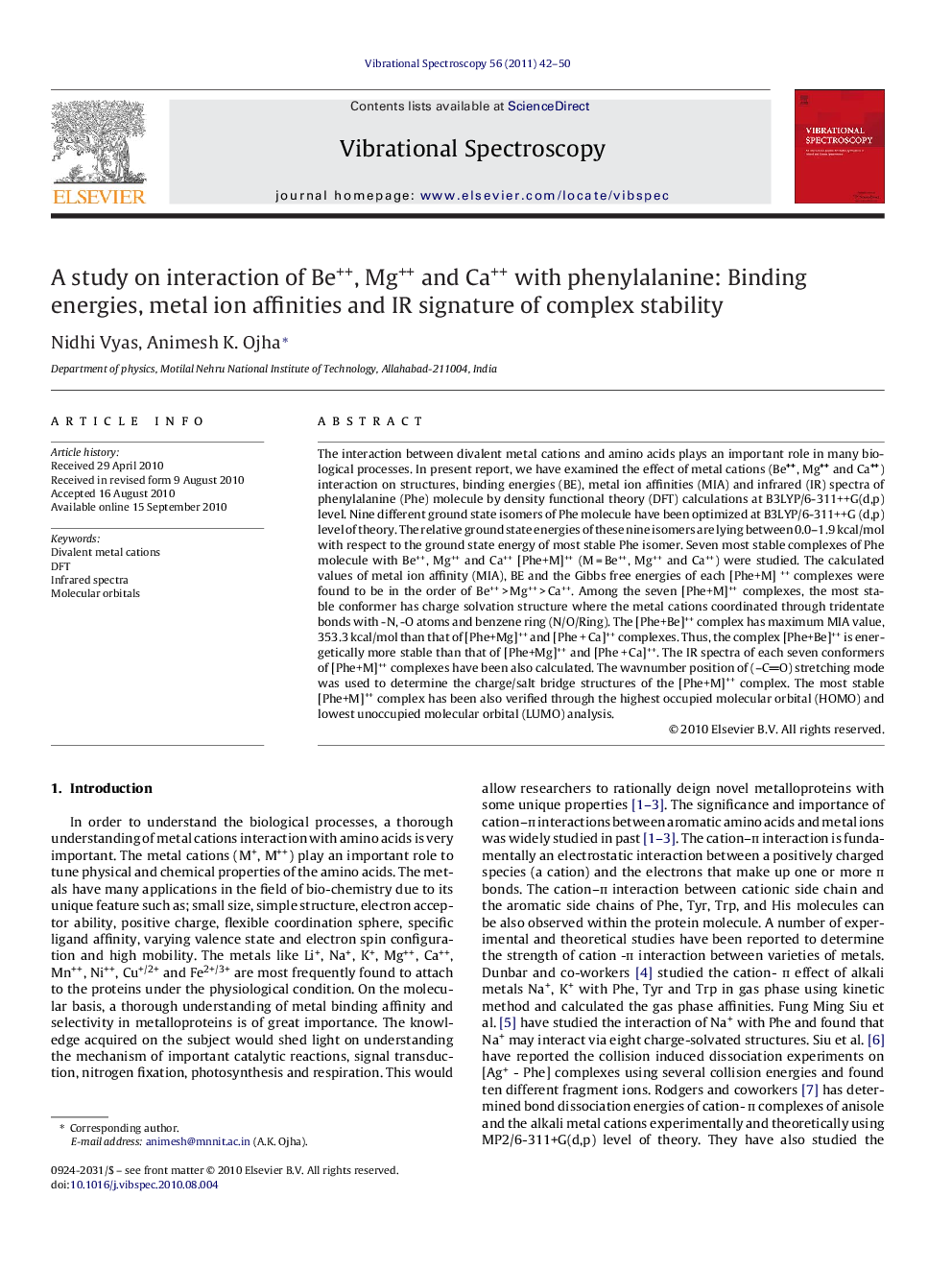| Article ID | Journal | Published Year | Pages | File Type |
|---|---|---|---|---|
| 1250645 | Vibrational Spectroscopy | 2011 | 9 Pages |
The interaction between divalent metal cations and amino acids plays an important role in many biological processes. In present report, we have examined the effect of metal cations (Be++, Mg++ and Ca++) interaction on structures, binding energies (BE), metal ion affinities (MIA) and infrared (IR) spectra of phenylalanine (Phe) molecule by density functional theory (DFT) calculations at B3LYP/6-311++G(d,p) level. Nine different ground state isomers of Phe molecule have been optimized at B3LYP/6-311++G (d,p) level of theory. The relative ground state energies of these nine isomers are lying between 0.0–1.9 kcal/mol with respect to the ground state energy of most stable Phe isomer. Seven most stable complexes of Phe molecule with Be++, Mg++ and Ca++ [Phe+M]++ (M = Be++, Mg++ and Ca++) were studied. The calculated values of metal ion affinity (MIA), BE and the Gibbs free energies of each [Phe+M] ++ complexes were found to be in the order of Be++ > Mg++ > Ca++. Among the seven [Phe+M]++ complexes, the most stable conformer has charge solvation structure where the metal cations coordinated through tridentate bonds with -N, -O atoms and benzene ring (N/O/Ring). The [Phe+Be]++ complex has maximum MIA value, 353.3 kcal/mol than that of [Phe+Mg]++ and [Phe + Ca]++ complexes. Thus, the complex [Phe+Be]++ is energetically more stable than that of [Phe+Mg]++ and [Phe + Ca]++. The IR spectra of each seven conformers of [Phe+M]++ complexes have been also calculated. The wavnumber position of (–CO) stretching mode was used to determine the charge/salt bridge structures of the [Phe+M]++ complex. The most stable [Phe+M]++ complex has been also verified through the highest occupied molecular orbital (HOMO) and lowest unoccupied molecular orbital (LUMO) analysis.
